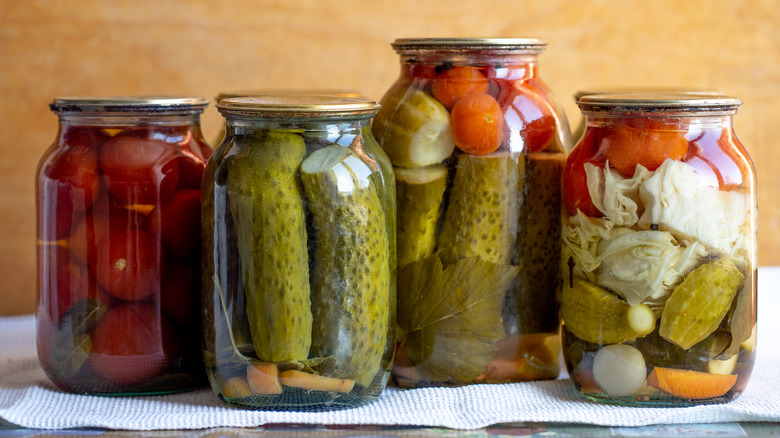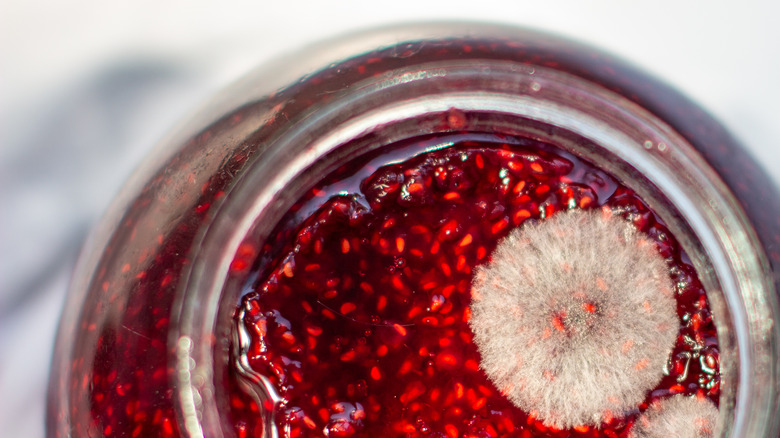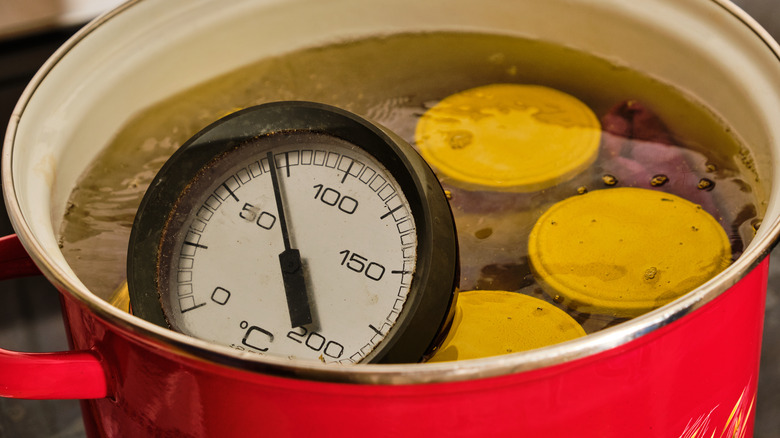The Rule You Need To Follow When Canning At A Higher Altitude
Peruse any spring farmer's market, and you'll find stalls boasting shiny jars filled with nostalgic flavors, from powerful pepper to sugary strawberry. Locally canned jams, jellies, and preserves make the mouth water for sweetness and spice — the fresher, the better. Just like grandma's famous pickles or the secret family jam recipe, home canning is a wonderful opportunity to preserve food and memories.
But before you start slicing, it's important to prepare the ideal canning environment and process for your kitchen. High altitudes change the canning process, so be sure to know your altitude before breaking out the jars. Whether using a pressure canner or the water bath canning method, you want to find the right guidelines for your tools and elevation.
Don't worry, though, there's a simple solution to high-altitude canning: You just need to boil your jars a bit longer to make up for lower boiling temperatures. After setting up your high-altitude home cannery, you should review the appropriate temperature and pressure requirements to ensure the safest (and tastiest) result.
Preserving your health
Home canning at higher altitudes presents a unique preservation circumstance: The boiling temperature for water decreases as altitude increases. Lower boiling temperatures mean a higher risk of microorganisms and enzymes surviving in the food. Improperly canned foods could be a hotbed for bacteria, mold, and yeast to grow and spoil all your hard work. When canning at high altitudes, you should be especially cautious of exposure to botulinum spores.
Botulism is a disease caused by the powerful neurotoxins in the C. botulinum bacteria, according to the U.S. Department of Agriculture. The disease can be life-threatening and affect the body's nervous system, so it's crucial to practice safe canning to avoid getting sick. Many fresh foods have this bacteria, but it only reproduces anaerobically, which means low oxygen conditions like canning could become dangerous. Nobody wants to ruin a yummy sandwich with an unexpected illness, so this easy rule will have you safely filling jars in no time.
Finding your can-do altitude
If you live over 1,000 feet above sea level, America's Test Kitchen recommends adding five minutes to the processing time for each additional 2,000 feet in elevation. For example, if the instructions call for boiling your canning jars for 10 minutes, and you live at 3,000 feet above sea level, you should boil for 15 minutes. If you happen to be canning atop Mt. Everest, you'll be boiling those jars for a while.
If you're using a pressure canner, you'll need to adjust the pressure settings based on your altitude. At 2,000 feet above sea level, the U.S. Department of Agriculture reports that you need 11 pounds of pressure to reach 240 degrees Fahrenheit. They also suggest adding a pound of pressure for every 2,000 feet increase in elevation. If done correctly, canned foods can actually retain more valuable nutrients than fresh produce, and preservation ingredients like pickling salt, vinegar, and spices pack an extra punch.
No matter which method you use, practicing safe canning techniques will preserve your special recipes, so you can keep on jamming — even at 10,000 feet.


